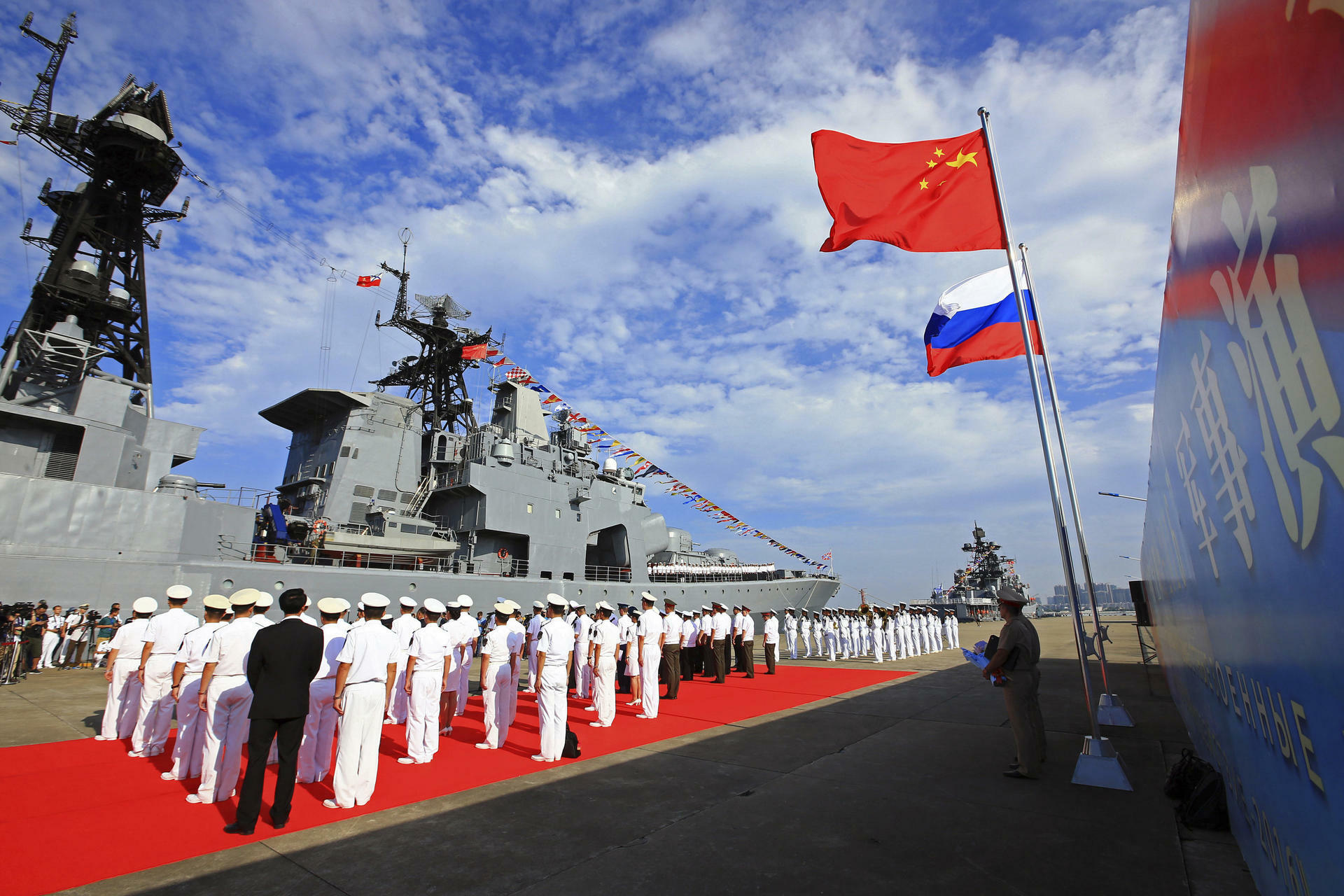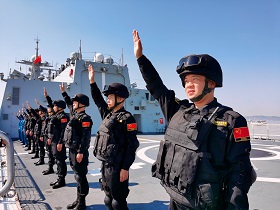That U.S. Vice President Kamala Harris paid an official visit to Singapore and Vietnam in late August 2021 signifies clear intention of Joe Biden’s democratic administration to forge ahead with the course taken by his predecessor to build A Free and Open Indo-Pacific. According to the statement made by the second-highest political office-holder in the U.S., fostering partnership with the countries of the Indo-Pacific, including those in Southeast Asia, is Washington’s priority in foreign policy. Kamala Harris reaffirmed the U.S. commitment to the international rules-based order, ensuring freedom on the seas, unimpeded commerce and advancing human rights. Although the U.S. Vice President noted that China continues to coerce and intimidate, Washington’s engagement in Southeast Asia, she argued, is not against any country, nor is it designed to make ASEAN member states choose between countries. At the same time, almost all Indo-Pacific states, either known as the so-called Quad—the United States, Japan, India and Australia—or those willing to join the initiative on a less binding basis, have already failed to escape the adverse effects of the rapidly deteriorating U.S.-China relations.
Today, Beijing is no longer going to hide its capabilities and bide its time, rather pursuing policies to advance its own security and development interests. China’s activities, not being directed against anyone, are perceived by the United States and its allies as an expansion and an attempt to crash the liberal world order, which is habitually defended by the liberal military force.
Bon Voyage
That U.S. Vice President Kamala Harris paid an official visit to Singapore and Vietnam in late August 2021 signifies clear intention of Joe Biden’s democratic administration to forge ahead with the course taken by his predecessor to build A Free and Open Indo-Pacific. According to the statement made by the second-highest political office-holder in the U.S., fostering partnership with the countries of the Indo-Pacific, including those in Southeast Asia, is Washington’s priority in foreign policy. Kamala Harris reaffirmed the U.S. commitment to the international rules-based order, ensuring freedom on the seas, unimpeded commerce and advancing human rights. Although the U.S. Vice President noted that China continues to coerce and intimidate, Washington’s engagement in Southeast Asia, she argued, is not against any country, nor is it designed to make ASEAN member states choose between countries. At the same time, almost all Indo-Pacific states, either known as the so-called Quad—the United States, Japan, India and Australia—or those willing to join the initiative on a less binding basis, have already failed to escape the adverse effects of the rapidly deteriorating U.S.-China relations.
Top Secret (or maybe not)
Previously classified as secret and unintended to be publicly released before 2042, the U.S. Strategic Framework for the Indo-Pacific was made available in May 2021. Experts believe this to be a guarantor of continuity in the Asian dimension of Washington’s foreign policy, regardless of the party affiliation of the country’s leadership. The document provides for a tougher confrontation with China in the military and economic spheres, which may negatively be perceived by some Indo-Pacific states and complicate their relations with the United States.
The policy outlined in the document seems inconsistent, which may cause misunderstanding on the part of allies and partners, resulting in a discussion about the real priorities and intentions of the United States. For example, it is difficult to explain the differing interpretations of India’s role. In the declassified NSC document, the nation is equated with Washington’s leading partners in the region, which implies an allocation of significant assistance from the U.S. Department of State, the military and the secret services in order to enhance “India’s capacity to address continental challenges.” Meanwhile, the 2019 Indo-Pacific Strategy Report of the U.S. Department of Defense ranked India among small and medium-sized states of Asia, which are not considered U.S. allies and are, therefore, not eligible for considerable assistance.
The ASEAN Way
Australian experts note that the deliberately declassified document reveals the need to consolidate the leading role of ASEAN in the security architecture of the region. At the same time, there is no consensus among the union’s member states regarding the essence and degree of priority of such important for the United States categories as freedom of navigation, trade and investment, respect for human rights and the rule of law. The so-called universal liberal values are of less importance to them as compared to the practical benefits coming from bilateral relations with China. According to Indonesian experts, such a divergence of views signifies apparently little sense of the specifics of Southeast Asia and regional processes on the part of analysts in Washington. They believe that the United States has not yet been able to convince the ASEAN nations of the need to create a counterbalance to Beijing as the U.S. cannot guarantee their security. As a result, the region has to face invidious choices since they find themselves at the intersection of the U.S.-China confrontation. Some countries seek to develop ties with Beijing within the Belt and Road Initiative (Thailand, Cambodia, Myanmar), while others opt for equidistance (Vietnam, Singapore) or adopt a wait-and-see approach (Philippines, Malaysia, Indonesia). At the same time, the latter increasingly tend to re-establish ties with the U.S. in order to benefit from American partners and put pressure on the Chinese leadership.
Re-Rebalancing
Among the measures on claiming superiority over China, the architects of the U.S. Strategic Framework for the Indo-Pacific envisage to deny the People’s Liberation Army (PLA) air and sea dominance within the first island chain in a conflict (Japan, Taiwan, northern Philippines). However, this merely is a further extension of the “rebalancing” policy carried out without much success by the Obama administration. A restoration of this course is predetermined by the fact that the plans of the former U.S. President Donald Trump for the massive rearmament and more American troops to be stationed in the Indo-Pacific never received proper financial support. The doldrums seem to be rooted in the Biden administration officials being skeptical about these grand in scale military goals in the Indo-Pacific, which they believe are neither affordable nor necessary to balance China and protect U.S. interests in Asia.
The underlying theme of the National Security Council report is “the U.S. remaining the region’s dominant actor.” However, analysts believe that Washington’s fundamental interest is effectively about ensuring access of national manufacturers to the markets and resources of the region rather than maintaining U.S. hegemony there. To this end, the American authorities are invited to clearly define how they could help the states of South and Southeast Asia in resisting pressure from China. At the same time, experts rely on the Cold War experience, when the U.S. could justify its military and economic presence by the menacing spread of communism. Consequently, the notion of an authoritarian the Chinese Communist Party and the need to sever ties with communist China are gaining popularity in the American establishment.
First Match
The Pacific Deterrence Initiative and the Interim National Security Strategic Guidance provide for a change in the U.S. military presence in the Indo-Pacific, taking into account its reorientation to ensure an effective response following the loss of unconditional dominance over the PLA.
The key pillars of the revised strategy to deter China were presented by Navy Adm. Philip S. Davidson in March 2021, at that time the commander of the U.S. Indo-Pacific Command (USINDOPACOM). He believes that China’s military capabilities will enable it to upset the status quo in most of East Asia, especially in the Taiwan Strait, the East China and the South China Seas, over the next six years. In order to prevent a further erosion of the rules-based order, he suggested putting a premium on “exercises, experimentation, and innovation” within the U.S. military in the Indo-Pacific as “critical enablers to deter day-to-day, in crisis, and key to our ability to fight and win.”
The Pentagon plans to provide for the allocation of USD 4.68 billion for the force design and stronger military capabilities in 2022, with another USD 22.69 billion spanning from FY 2023 through FY 2027. One of the focus areas is the creation of forward-based joint rotational forces under the auspices of INDOPACOM that would be capable of responding to challenges that require immediate and joint solutions.
Earlier on, one of the authors of this initiative, former U.S. Navy Secretary Kenneth Braithwaite, argued that the U.S. Navy should create a new First Fleet [1] that would take some load off the U.S. Third and Seventh Fleet (respectively based in San Diego and Yokosuka). According to American experts, the Seventh Fleet, overloaded with combat and training under the present conditions, is experiencing difficulties in supplies and staffing, since it is actually forced to operate in a vast area of the western Pacific and eastern Indian Oceans (from the dateline to India–Pakistan border). At the same time, the strength of the Third Fleet, whose AOR is the east and north of the Pacific, is excessive to fulfill the tasks facing it now [2].
Spare the Triarii
The U.S. military envisage the allies and partners of the United States to become the basis of the security system of “A Free and Open Indo-Pacific.” In the meantime, close attention will be paid to the compatibility of branches of the armed forces, interaction of units and formations, improving the exchange of information as well as leveling the technology of the region’s nations in the field of defense to be similar to the U.S.
The U.S. Department of Defense considers it justified to maintain an emphasis on forward deployment at foreign bases and the rotation of operational formations (mainly aircraft carrier and expeditionary strike groups), based on the specific situation. In this regard, Washington relies on India’s and Singapore’s assistance in the deployment of American units and formations as well as their logistic support. Promoting cooperation with the Maldives in this area is not ruled out either, with a defense agreement being signed in 2020. The prospects for a partial renewal of the substantive provisions of the 1951 Mutual Defense Treaty Between the United States and the Republic of the Philippines, which provided for the deployment of the U.S. armed forces on its territory, look rather realistic. Earlier in February 2020, Rodrigo Duterte, President of the Philippines, announced the suspension of the Visiting Force Agreement, but his position towards the U.S. softened, given the complications in relations between the Philippines and China.
First Chain Bound
Based on the rhetoric of the U.S. military leadership representatives and the published reports, Washington must constantly demonstrate its ability to deter China, denying China actions in critical regions and deploying sufficient U.S. forces in these regions to defeat the PLA. In alignment with the situation, the Pentagon finds this possible through creating local superiority zones within the so-called first island chain, using Fleet Forces, Air Force, mobile air missile defense systems as well as high-precision short- and medium-range missiles. In addition, an integrated Indo-Pacific anti-missile and air missile defense system is designed to ensure stability for the second island chain (from the Bonin Islands through the Mariana Islands to New Guinea). The U.S. Department of Defense is planning to allocate funds to improve space detection and tracking systems for a timely response to the PLA’s unwanted activities. These actions are designed to fulfill the Pentagon’s mission to increase the lethality of the Integrated Joint Force to prevent any enemy from dominance in land, sea, air, space and cyberspace conflicts.
Hidden Catch
The plans presented by Washington are built around the futility of military operations against it within the Indo-Pacific and are coupled with high losses for any potential adversary. At the same time, the presented strategy does not provide for inevitable retaliatory measures from China. Relying on allies and partners seems controversial as well, including when it comes to the deployment of additional U.S. Armed Forces. Most Asian states would prefer to retain the benefit from furthering cooperation with Beijing and are afraid of being abandoned by Washington in the event of a serious threat to their security, with the situation in Afghanistan already serving as an illustration.
Apparently, the Biden administration, even in the face of the declared defense budget austerity, will still increase the costs to strengthen U.S. military presence in the Indo-Pacific. On the one hand, this approach reflects the intention to reach a compromise with the Republicans. On the other hand, it is aimed at putting pressure on China and persuading it to negotiate such important areas of bilateral cooperation as trade, arms control and freedom of navigation in the South China Sea. This policy has already shown itself at the meeting of the U.S. and China representatives in Anchorage in March 2021 as well as at the meeting of U.S. Deputy Secretary of State Wendy Sherman with China’s State Councilor and Foreign Minister Wang Yi in July 2021.
Most likely, the United States will not give up on its attempts to establish a multilateral Quad-based security system in the Indo-Pacific in the foreseeable future. It is also planned to gradually involve other participants in this format, as evidenced by the increased contacts with Singapore, Vietnam, the Philippines and Indonesia. Taipei has a critical role to play in the U.S. strategic plans in the Indo-Pacific, while the development of military and technical, trade and economic cooperation, and the exchange of intelligence information with it deserves particular attention.
Today, Beijing is no longer going to hide its capabilities and bide its time, rather pursuing policies to advance its own security and development interests. China’s activities, not being directed against anyone, are perceived by the United States and its allies as an expansion and an attempt to crash the liberal world order, which is habitually defended by the liberal military force.
1. An operational formation with AOR in the Northwest Pacific and the same name already existed from 1946 to 1973.
2. The total number of warships (aircraft carrier, landing ship, cruiser, destroyer, frigate, multi-role nuclear submarine) is almost five times greater.







